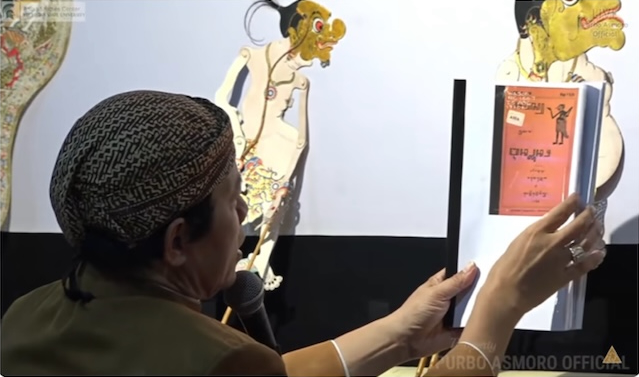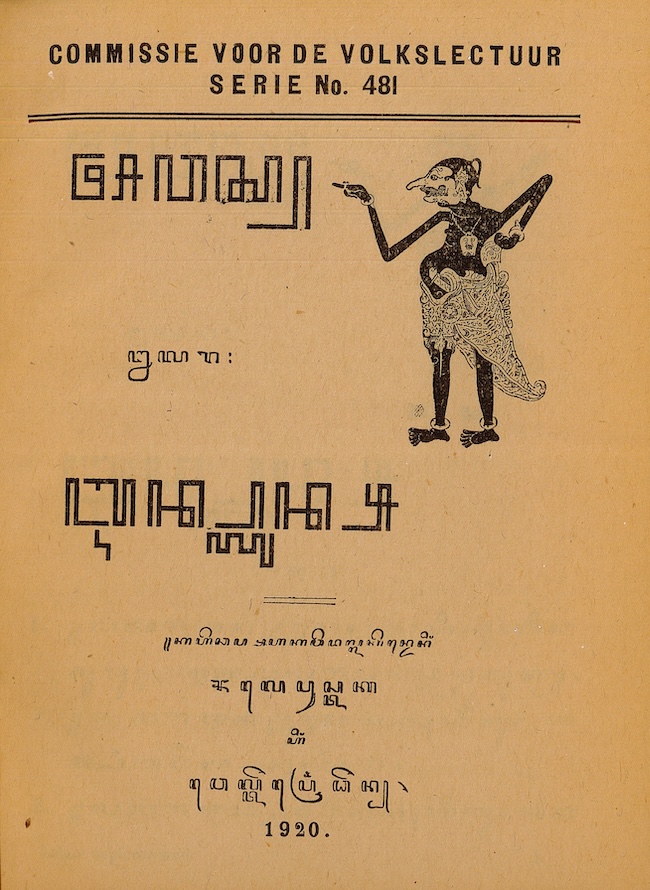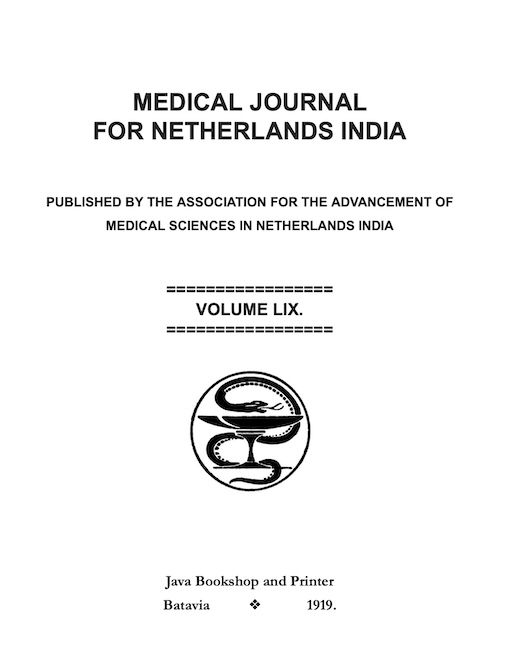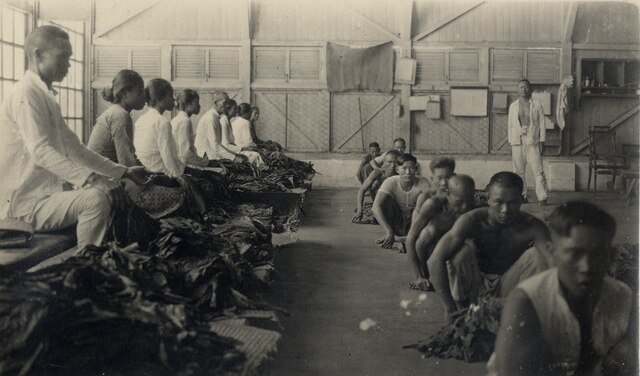Featuring translations and analysis of rare texts, including the revival of an early 20th century Javanese wayang play, this edition illustrates the multi-faceted ways in which pandemics affect us and how a conversation between the science of epidemiology and public health, drama and translation are interwoven in interesting and sometimes surprising ways.
Siddharth Chandra
This edition originated during the lockdowns of the COVID-19 pandemic in 2020-2021, a number of years after I had published my research reexamining the mortality from the flu epidemic of 1918 in Java. In summer 2020, when I was President of the American Institute for Indonesian Studies (AIFIS), a consortium of over thirty US universities with faculty members who have dedicated their careers to scholarship on Indonesia, decided to hold a virtual conference on Indonesian Studies in partnership with the Asian Studies Center at Michigan State University. Our decision to ‘go virtual’ was a response to the pandemic and the restrictions on movement that it entailed. In planning the conference, we expected 100 or so scholars to attend the conference and that, after the end of the pandemic lockdowns, the need for such a virtual conference would cease. We were pleasantly surprised when about 500 scholars from over twenty different countries attended the conference, among them the interdisciplinary team that has put together this collection. To accommodate ongoing interest among the global community of scholars of Indonesian Studies, the AIFIS-MSU conference has now become an annual event.
Professor and ethnomusicologist Martin (Marty) Hatch from Cornell University, to whom this collection is gratefully dedicated, was AIFIS’s Treasurer at that time. Having steadfastly served AIFIS for a decade and held the organisation together during some of its most vulnerable years, Marty had built collaborations between AIFIS and leading lights in the world of Indonesian music and the arts.

One of AIFIS’s most productive collaborations was the one Marty established with the Javanese dhalang Purbo Asmoro in November 2020 through the good offices of Dr Kathryn (Kitsie) Emerson, Director of Ekalaya Performing Arts Center in Solo, Central Java. With AIFIS sponsorship, Purbo Asmoro performed 12 all-night wayang performances over the next 18 months, including one to celebrate the inauguration of US President Joe Biden and Vice President Kamala Harris in January 2021. Purbo Asmoro and Kathryn Emerson also coordinated wayang performances by Cahyo Kuntadi, Sigid Ariyanto, Midiyanto S. Putro, and Gamblang Carito under the AIFIS program, as well as two online discussion seminars. All the events were live-streamed, with Kitsie providing simultaneous English-language translation.
Wayang in a time of influenza
During this time, I approached professor of Javanese and Indonesian Studies and historian at the University of Michigan, Nancy Florida, to ask if she might be interested in translating the Javanese play Awas Lêlara Influwensa (Beware the Disease of Influenza). This unusual piece was written by an unknown Javanese author and published by Balai Pustaka two years after the devastating influenza pandemic of 1918. The aim was to educate Javanese subjects of the Dutch East Indies in the proper care of influenza patients and in the prevention of the spread of the disease. Written in the form of a play with characters from the wayang tradition, this small book is the inspiration for this collection.
Nancy was enthusiastic about the project and agreed to translate the volume (much to our delight!) and, as the reader will see, her rendering of this anonymous Javanese work elegantly captures the sparkling wit so often seen when the punakawan (clown servants of the shadow play) make their appearance on the stage. It also reveals complicated understandings – and Dutch (or Dutch-educated) understandings of ‘native’ understandings – of the pandemic from a colonial Javanese perspective.

In the summer of 2021 with the COVID-19 pandemic continuing to rage across the globe, I asked Kitsie if she could persuade Purbo Asmoro to bring to life, after a hiatus of 100 years, the wayang-inspired play Beware the Disease of Influenza. We were (again) delighted when Purbo Asmoro agreed not only to perform it, but also to build out from the original text to capture the immediate context within which he would present his work. As Kitsie explains, Purbo Asmoro calls his novel creation a fully developed wayang play, that tells the story of the ravages of COVID-19 in contemporary Java, Tamba Têka Lara Lunga (Remedy Shows Up, Malady Gives Up). While Purbo Asmoro uses 1918 as a starting point for this work, he proceeds to connect it to the contemporary COVID-19 pandemic, which was ravaging populations across the world and in Indonesia at the time of his performance. Purbo Asmoro performed his creation on 28 September 2021, with Kitsie providing a live English translation. The live-streamed performance has now been viewed over 38,000 times.
A witness account
Finally, in order to provide some background for the two artistic works in this collection – Purbo Asmoro’s performance and Nancy’s translation – I have included a translation of one of the most detailed accounts of the 1918 influenza pandemic in Java; that of Pieter Bastiaan van Steenis, a health officer with the KNIL (Koninklijk Nederlandsch-Indisch Leger, the Royal Netherlands East Indies Army) who was posted to Magelang and witnessed the devastation that the pandemic caused there. A young officer at the time, van Steenis was to later return to the Netherlands to pursue an illustrious career as a doctor and with the Department of Tropical Hygiene at the Colonial Institute in Amsterdam. In recognition of his deep knowledge, which he captured in a rich treatise on tropical medicine, he was also appointed an extraordinary professor at the University of Amsterdam.
As I explain elsewhere in this edition, statistics in van Steenis’ report demonstrate that the 1918 influenza pandemic took an unusually severe toll on the people of Magelang (and, likely, of Java as a whole). While he noted the ‘ignorance’ of the local population, his report also demonstrated, somewhat ironically, that western scholars themselves disagreed about both the causative agent of influenza and how it was transmitted.

Meanwhile, as Nancy’s and Kathryn’s articles in this edition emphasise - as does Ravando (2022) - Javanese made sense of the pandemic using their own ideas of the universe. The government’s attempt to educate them probably emerged from a recognition of these misguided (to the government) understandings and the perceived need to bridge Javanese and western understandings (or misunderstandings) of influenza. Their use of a beloved tradition as such a bridge resulted in Beware the Disease of Influenza.
Lessons learned?
Almost a century after it ravaged the world, the 1918 influenza was being simultaneously called the ‘Great Influenza’ and the ‘Forgotten Pandemic’. This incongruous pair of labels says as much about the pandemic, which came and went in the blink of an eye only to be overshadowed by the subsequent Great Depression and World War II, as it does about the human attention span. Lessons that could and should have been learned and internalised after 1918 were forgotten and had to be re-learned with haste in 2020, as COVID-19 took its terrible toll.
This collection illustrates the multi-faceted ways in which pandemics, from the 1918 influenza to COVID-19, affect us. Here we see a conversation between the science of epidemiology and public health, drama and translation, and the performing arts and contemporary interpretations of historical events, all of which are interwoven in interesting and sometimes surprising ways. These pieces are our attempt to bring these diverse perspectives together in the hope that the reader will appreciate their many interconnections. We also hope that they will serve as a reminder that pandemics have been and will always be part of the human struggle, and that we forget their lessons at our own peril.
Siddharth Chandra (chandr45@msu.edu) is Director, Asian Studies Center and Professor of Economics, James Madison College and Professor (by courtesy), Department of Epidemiology and Biostatistics, Michigan State University.











